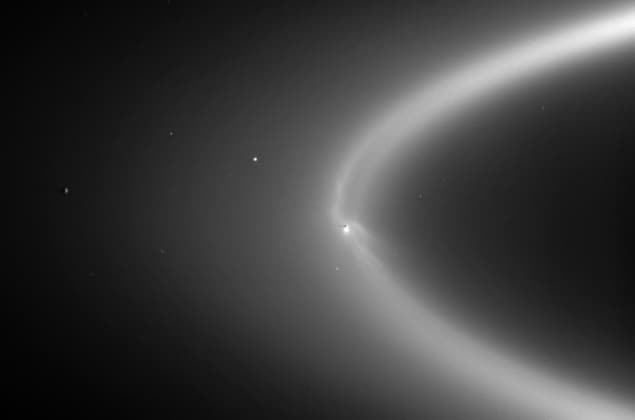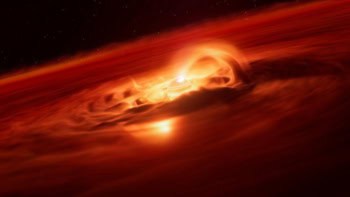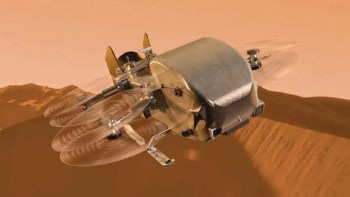One of Saturn's moons is giving its neighbours a face lift. Astronomers in the US claim that material ejected from Enceladus is "sandblasting" the surfaces of neighbouring satellites, making them appear much more shiny than expected. The observations, which were made using the Hubble Space Telescope, could cast some doubt on how an object's albedo -- or shininess -- is used to determine when a moon or planet was last geologically active (Science 315 815).

Albedo is a measure of how well a surface reflects light and is used by astronomers to study the surfaces of planets, moons and asteroids. Newly created surfaces on geologically active bodies tend to reflect light very well and have relatively high albedos — whereas geologically inactive bodies with ancient surfaces shaped by meteorite impacts tend to have lower albedos.
Enceladus has an extremely high albedo because it is very geologically active – indeed a plume of material from eruptions at its south pole gives rise to a vast ring that envelops at least 11 of Saturn’s other satellites. These other moons, which are very old and have geologically inactive surfaces, were expected to have low albedos.
But new direct albedo measurements made by Hubble at the precise moment when the Sun, Earth and Saturn were in alignment tell a much different story. Anne Verbiscer of the University of Virginia and colleagues at Wellesley College, the SETI Institute and Cornell University discovered that four moons within this ring have albedos that are about 50% greater than previously thought.
The astronomers believe that these moons are being constantly bombarded by high-velocity particles from the plume. This sandblasting is though to produce clean, icy, and very reflective surfaces even though the moons are geological inactive. Verbiscer and colleagues believe that their theory is supported by the fact that enhanced albedos were not observed in two other moons that were inside the ring and therefore not subjected to the sandblasting.
Verbiscer told Physics Web that this is the first time that such a sandblasting effect has been observed directly. However, the sandblasting effects of small meteorites have already been put forth as an explanation for the differences in the albedos of the leading and trailing hemispheres of Saturn’s moons.
Despite the dramatic effects of sandblasting, Verbiscer says that rather than being a “driving rain” of particles, the flux would be so low that an observer on one of the moons would not be aware of the sandblasting process.



